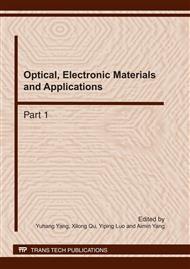p.75
p.81
p.86
p.91
p.96
p.101
p.106
p.111
p.116
The Simulation Analysis of Semi-Active Suspension System in Vehicle Based on Sliding Mode Control with Varying Structure
Abstract:
A sliding mode controller for semi-active suspension system of a quarter car is designed with sliding model varying structure control method. This controller chooses Skyhook as a reference model, and to force the tracking error dynamics between the reference model and the plant in an asymptotically stable sliding mode. An equal near rate is used to improve the dynamic quality of sliding mode motion. Simulation result shows that the stability of performance of the sliding-mode controller can effectively improve the driving smoothness and safety.
Info:
Periodical:
Pages:
96-100
Citation:
Online since:
March 2011
Authors:
Price:
Сopyright:
© 2011 Trans Tech Publications Ltd. All Rights Reserved
Share:
Citation:


